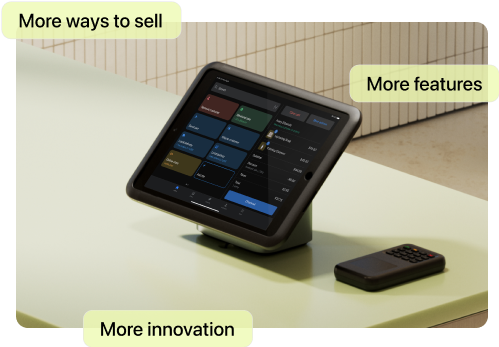Companies rebrand all the time—for better or worse. A brand might switch up its image to drive growth in a competitive market, speak to a new target audience, or create a better experience for its existing users. In some cases, a rebrand can help shake off bad publicity with a new identity that wins back customer loyalty.
A successful rebranding announcement amplifies your rebranding efforts, helps maintain a strong brand image, and retains loyal customers, ensuring a positive reception from both the public and the press.
Here’s how to effectively communicate the next chapter in your brand’s journey and get everyone as excited as you are, plus a few announcement examples of what to do—and not do—when launching your new brand.
What is a rebranding announcement?
A rebranding announcement is a planned, public statement communicating a major change to your company image. After implementing a rebranding strategy, refreshing your visual identity, and updating your brand assets, you’ve reached the part of the rebranding timeline where you share the big news—with a rebranding announcement.
There are many ways to announce your brand has gotten (or is getting) a major glow up, from a rebranding press release and a social media campaign to a rebranding announcement email. You own the creative process behind a successful rebrand and can choose platforms and campaigns that best align with your new brand identity.
How to make a rebranding announcement
- Define your new brand story
- Build a tight rebranding messaging strategy
- Tailor your message to different platforms
- Launch your announcement
- Embrace the customer response
Using these steps to guide your rebranding process can help reinforce your company mission, get media coverage, and strengthen your brand story:
1. Define your new brand story
Root any significant rebrand in a thoughtful strategy, rather than surface-level reasons like trends or one bad sales month. Identify how your customers, company values, or both inspired your creative process. Then tell a powerful and empathetic story that builds trust and elevates your rebranding announcement.
If customer pain points inspired your rebrand, share these issues transparently. Existing customers will feel like your new brand is taking their concerns into account and new customers will see your commitment to quality in action.
Or, perhaps your new brand reflects an updated mission statement with values that your target customers appreciate—like sustainability or fair business practices.
2. Build a tight rebranding messaging strategy
People don’t like change—unless they see an improvement. Frame the new brand as a positive evolution (rather than simply pointing out what’s changed) to show that your new direction benefits both potential and loyal customers. Make sure your rebranding announcement answers the following questions:
- What’s improved? Clearly outline how your rebranding efforts set customers up for success. For example, share how a simplified visual identity or integrated accessibility tools help them navigate your new website better.
- What’s still awesome? Reassure customers that the current brand values they love, such as your company’s commitment to quality, are still at the core of the business.
- When can customers expect changes? A successful rebranding announcement gives the media and your customers a heads-up about what’s coming and when they might expect it.
Focusing your messaging helps you develop your marketing materials, like a compelling press release, social media posts, or rebranding announcement email.
3. Tailor your message to different platforms
If you’re announcing your rebrand on more than one platform, adjust your message per channel. Social media posts require a different approach than a blog post or an email. Determine where to keep the message more high level and when to offer a deep dive to reach your target audience effectively.
Here’s where to stay high level:
- Social media platforms. A rebranding announcement can be part of your larger social media marketing strategy. It’s a great place to drum up excitement, spark conversation about your company’s identity, and give your audience a sneak peek of your new brand and its visual elements.
- Website. Reinforce your brand values by creating a dedicated landing page on your new website that shares the why behind the rebrand with impactful customer stories or a behind-the-scenes video.
- In-person events. With the right budget, time, and resources, hosting a launch party or speaking at a conference is an excellent way to announce your rebranding initiative and attract media coverage.
Here’s where to dive deeper:
- Press release. A compelling rebranding press release is a cost-effective tool to tell the in-depth story of your rebranding journey, explain the specifics of what has improved, and reinforce your overall brand image.
- Email. Engage existing customers with a compelling subject line that sparks curiosity and leads them to detailed email body copy with information like product updates or rebrand timelines.
- Podcast. If you host or are interviewed on a podcast, use the conversational setting to speak on your rebranding process and brand values in more depth.

Free: Press Release Template
To help you get started, we put together this template to help you structure your story using a common press release format. You can replace each component with your own information and adapt it according to your needs.
4. Launch your announcement
Your rebranding announcement isn’t a one-and-done event—it’s part of an ongoing rebranding timeline. A well-structured launch calendar with pre-launch, launch, and post-launch assets can help you stay organized and tell a successful rebranding story. There are lots of content calendar and project management tools you can use, like Google Calendar or Trello.
Consider using a content management system (CMS), like Shopify, to manage your digital content and sales materials. This allows you to optimize your brand identity message, reach your target audience, and earn the trust of new customers. A CMS helps you create, organize, schedule, or publish your social media posts or any other assets related to your rebranding process, like a press release.
5. Embrace the customer response
Post–rebrand announcement, engaging with your audience and the media is one of the key elements for maintaining brand recognition and trust. Prepare an engagement plan for how to handle both positive and negative responses:
- Monitor feedback. Use a social listening platform to gauge customer sentiment and find opportunities to optimize your message.
- Amplify the love. Share customer success stories (with permission), comments, or responses with the rest of your audience.
- Address the negative. Negative feedback is inevitable, but you can respond with empathy to reinforce your company’s commitment to its customers.
- Stay consistent. Ensure responses align with your new brand story and tone of voice.
- Leverage AI. Train artificial intelligence (AI) on your new brand guidelines to automate responses and help you stay on top of every response that rolls in.

Free Worksheet: Brand Storytelling
Use this handy exercise as a guide to help you craft a compelling brand story and build a loyal audience through the power of storytelling.
Rebranding announcement examples
Announcing a rebrand can pay off, but it can also be risky. Here are a few examples of successful and arguably less successful rebranding announcements:
Oatly: Going all in on its values
Oatly went through a transformation in 2014 from a lesser-known Swedish oat milk brand to a $10 billion publicly traded global company by going all in on its brand values. With a limited budget and resources, it used its packaging as not just a rebranding announcement, but as a stake in the ground for its belief in sustainability and a healthier planet.
With a refreshed visual identity and brand colors, its new identity came to life: “Wow! No cow!” This new branding positioned the company as a nutritious alternative to dairy milk.
Domino’s: Admitting its faults
The pizza chain Domino’s leaned into both customer feedback and its values in a pivotal rebranding announcement in 2009. Dissatisfied customers compared Domino’s pizza to cardboard and its sauce to ketchup. Fixing this brand identity crisis required research and development to make a better product, but the magic sauce of this rebranding process was the campaign to reintroduce the brand.
Domino’s created a short documentary showing how the company history was rooted in a love of food before diving deeper into negative customer feedback. The film is brutally honest, including clips from focus groups tearing Domino’s pizza apart and chefs taking that feedback to improve the recipe.
Domino’s turned this critical analysis of its deficiencies into a national advertising campaign bravely called “Our Pizza Sucks,” where chefs personally delivered reinvented pizzas to customers from the focus groups and gained their approval.
Mailchimp: Supporting customers with details
Email marketing platform Mailchimp went through a rebrand in 2018 that included a visual change and product updates. In a rebranding announcement on its website and through email, it clearly explained how to navigate the product updates and how they made the customer experience easier.
It also gave a detailed history of the company and explained its commitment to customers: “We want to show our customers that being yourself is good for business by providing the tools and confidence to take risks, especially as their businesses evolve. We champion authenticity, originality, and expressiveness because it’s what helps us—and our customers—stand out.”
X: Walking away from a legacy
Twitter’s rebranding in 2023 faced a lot of criticism for changing an iconic brand, valued at around $4 billion. New owner Elon Musk made the rebranding announcement himself with a series of posts (previously called tweets) that made it clear the new brand, X, would pay no homage to its predecessor.
In press interviews, Musk explained the new direction of the company would grow beyond the 140-character messaging, distressing customers and causing many to leave. A lack of additional rebranding announcement materials—like a press release or specific product updates—didn’t help ease customer concerns.
Rebranding announcement FAQ
What should I include in a rebranding announcement?
The key elements to include in your rebranding announcement are a clear explanation of what’s driving the new brand identity, what’s changing, and when customers can expect to see the results of your rebranding efforts.
When should I announce a business rebrand?
You can announce your rebrand on the day of launch or before—but don’t wait until after you reveal your new identity. Ideally, make your rebranding announcement before the new brand launches to give customers a heads-up and secure media coverage.
How do I communicate a rebrand to customers?
There are many ways to launch a rebrand, including social media, email, a compelling rebranding press release, and a new website. To narrow down your content and messaging strategy, review your customer data to ensure you’re speaking effectively to your target audience and meeting them where they are.





